本文由 AELAND 授权mooool发表,欢迎转发,禁止以mooool编辑版本转载。
Thanks AELAND for authorizing the publication of the project on mooool, Text description provided by AELAND.
AELAND:该住宅位于西班牙福门特拉岛。从古至今,这个地中海小岛一直通过使用地域风格化的形状、颜色和纹理来保持和增强其地方特色。本次项目设计自然也以此作为指导准则。
AELAND:The houses are located in Formentera, a small Mediterranean island that has maintained its character over time. This character is what has been wanted to preserve and enhance through the use of shapes, colours and textures of the place and has served as the guiding thread of the project.
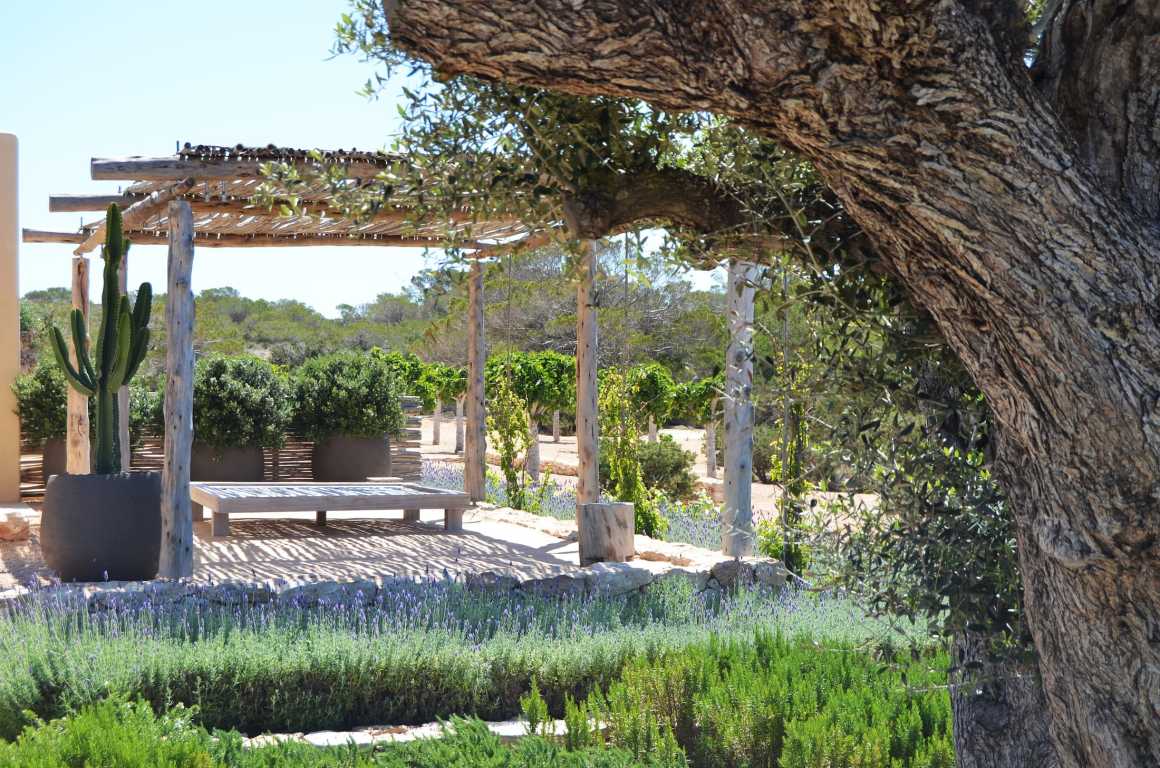
由于福门特拉特殊的气候条件,该项目创建了一个对外部场地环境开放的开阔景观方案。由传统技术建造的小型干石墙将整个花园组织成多种不同空间,这些断断续续围合花园的干石墙,给不同空间和环境之间带来了极大的流动性。
Thanks to the magnificent climatic conditions of Formentera, the landscaping project required a very extensive program that was open to the environment at the same time. The different spaces of the gardens are organized by small dry-stone walls built following the traditional technique, which are closing the gardens discontinuously, allowing a great fluidity between the different spaces created and the environment.
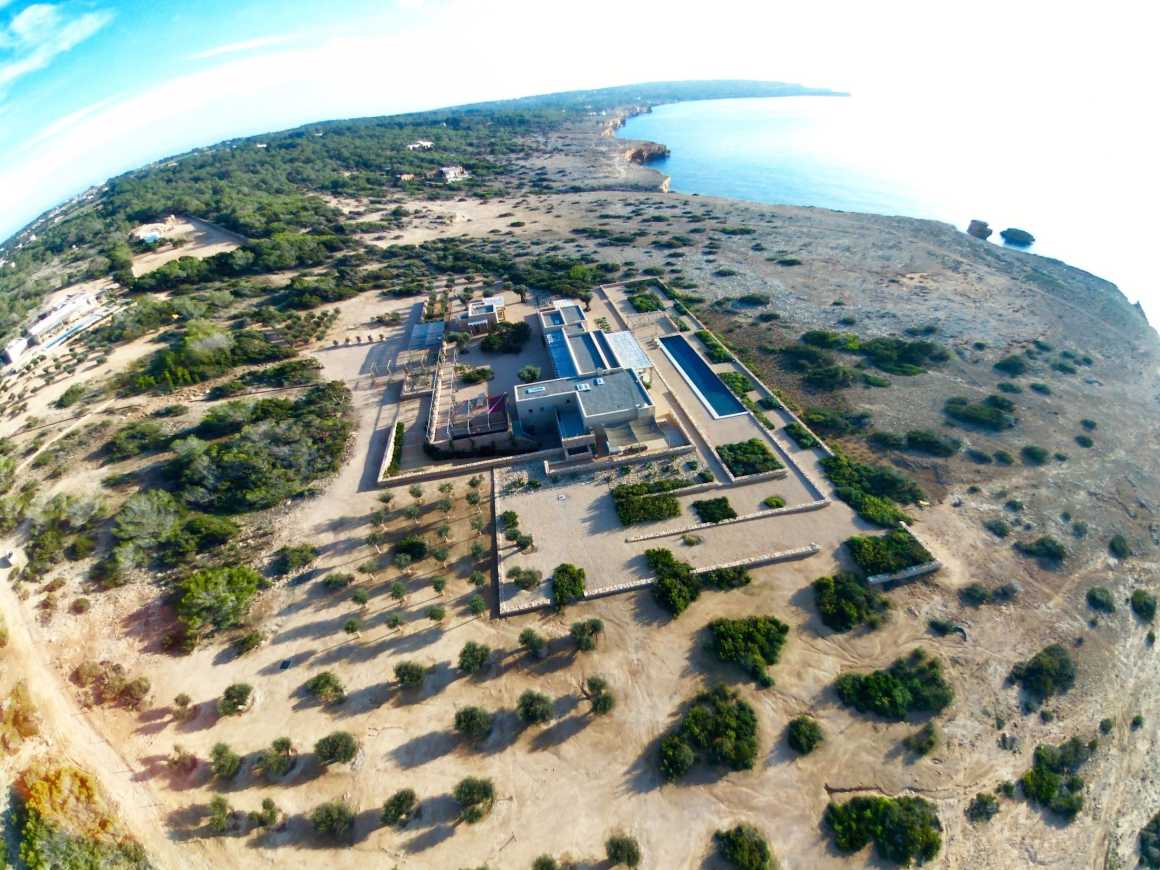
该项目的每个部分(停车场、烧烤区、室外餐厅、凉亭、室外露台和游泳池)都由一面小干石墙支撑着,更加突显出庭院中由sabina木材制成的特殊藤架结构。sabina木材是岛上的典型树种,对当地条件非常有抵抗力,其在以不同的方式解决遮阴问题的同时,还赋予每个区域专属特征。
Each part of the program (parking, barbecue, outdoor dining room, chill-out, outdoor terrace and pool) is supported by a small dry-stone wall from which the structures of the pergolas stand out. All of them have been made with sabina wood, typical tree of the island very resistant to the conditions of the site, and the shading elements have been resolved in different ways to give each area its own character.
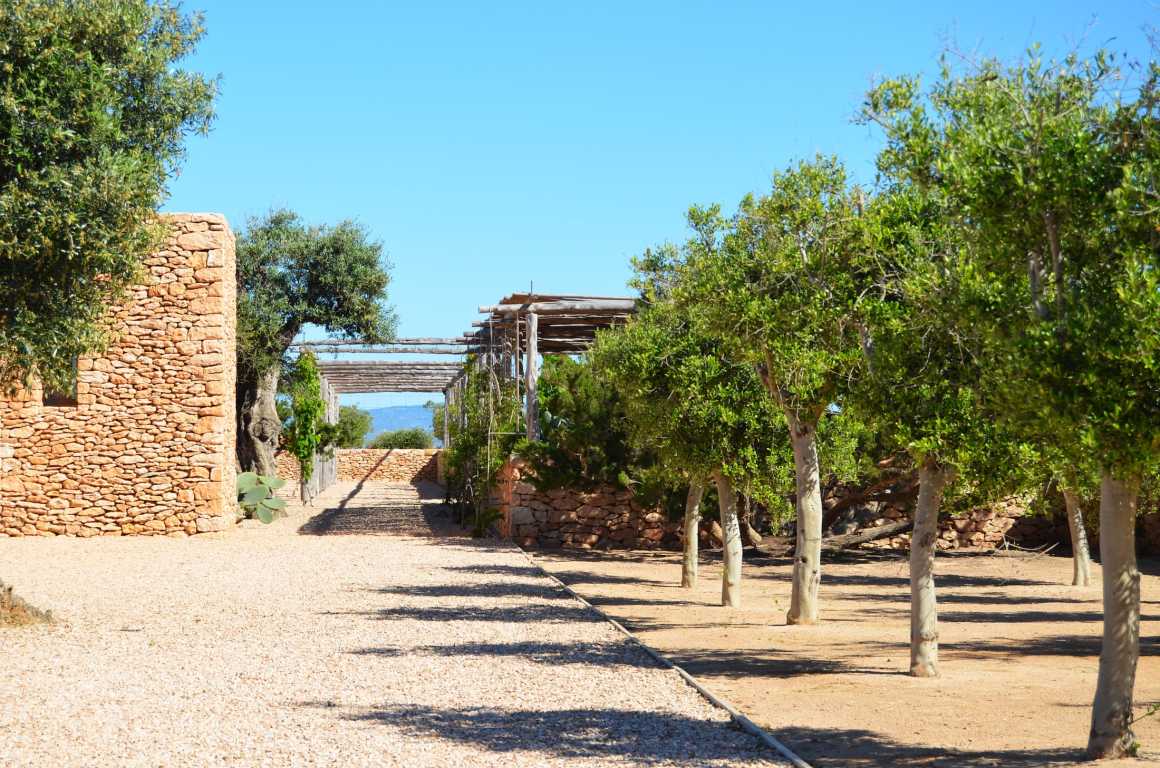
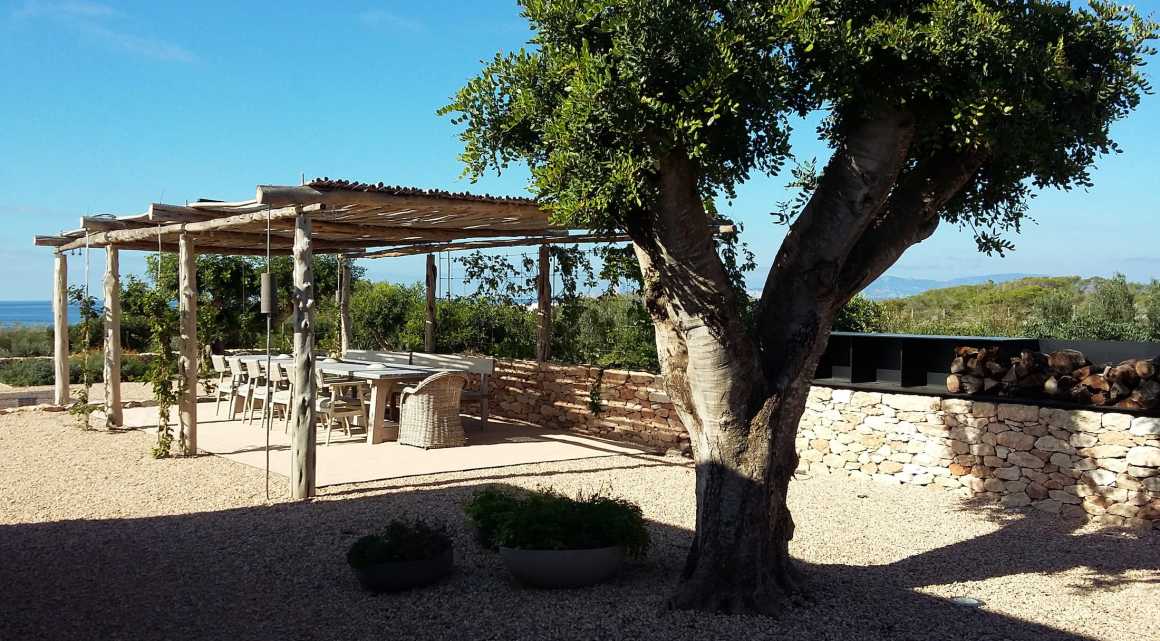
根据场地需要,棚架上铺设了一层杜松木的小树干,以及栗树的细长树干,有些时候,也可以铺设细金属网以制成蔬菜棚架。庭院中的其他元素,比如照明,也是将该地区的陶瓷结合sabina木材挂在藤架上,作为灯笼来装饰花园的。
The pergolas, according to the needs of the site, have been covered with small trunks of juniper wood, with long and thin trunks of chestnut, and in other cases with fine metal meshes to generate vegetable pergolas. Other elements such as lighting have also been worked with ceramics from the area, hanging from the pergolas, and with sabina wood, as lanterns arranged by the garden.
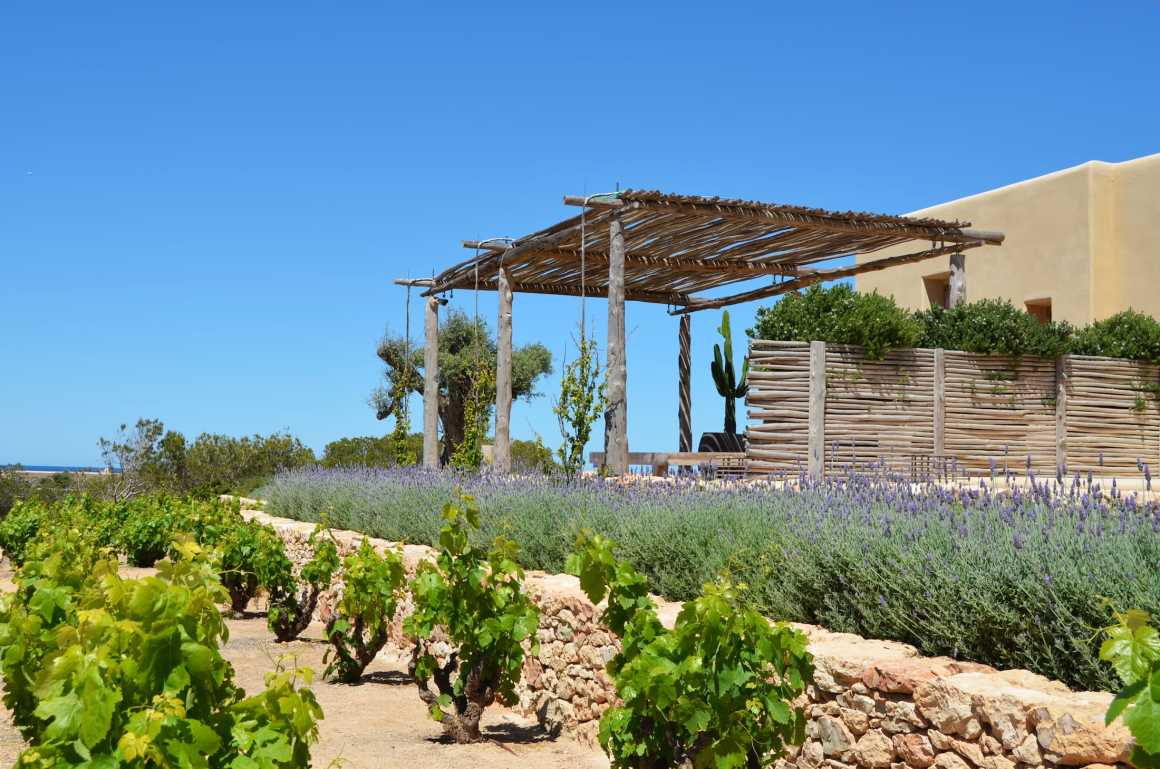
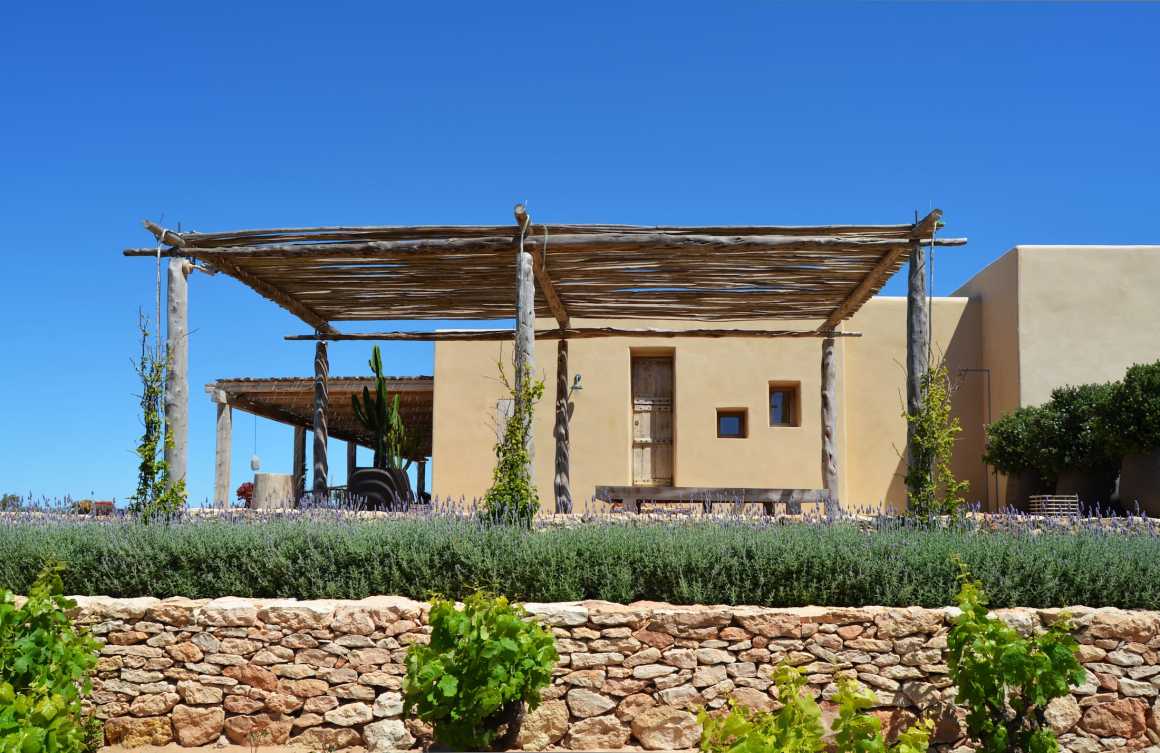


由工地石头制成的砾石铺设的花园地面,加强了房屋与周围环境之间的连续性。
The gardens´ floor has been treated with gravel made with stone from the site to reinforce the continuity between the immediate surroundings of the houses.
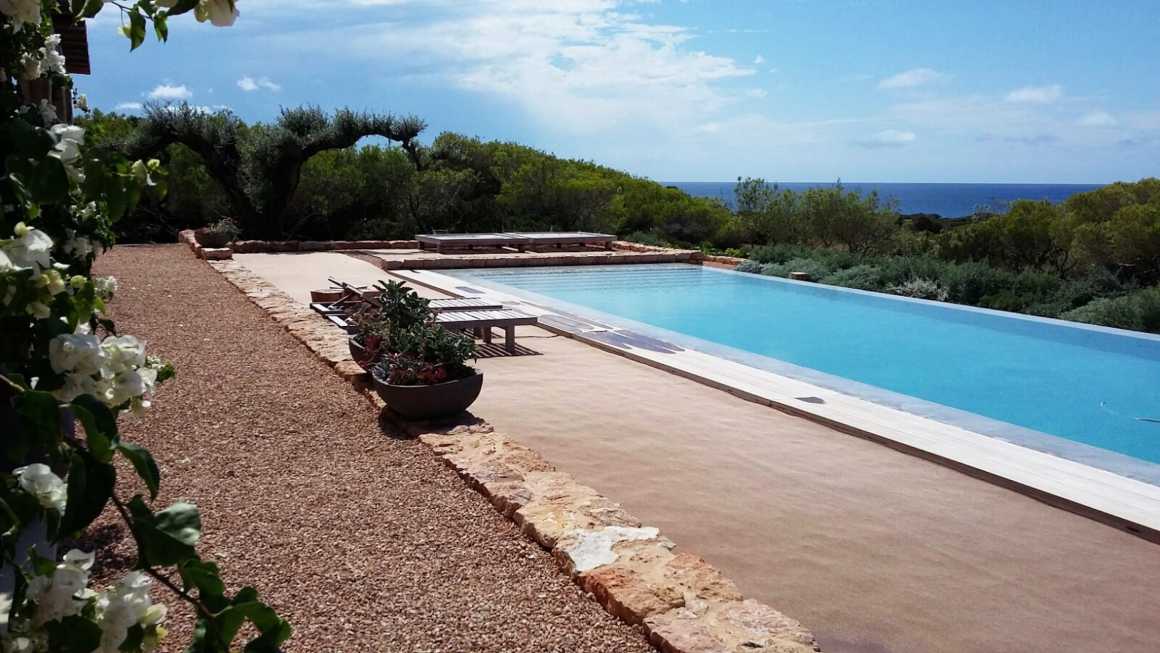

植物设计
场地内现有植被有限,且分布不均。现有的主要植物有:杜松、乳香黄连木和其他类型的低灌木,如百里香和迷迭香。种植园根据与现有植被最大可能融合的标准进行种植,补充增加了当地典型作物物种,如油橄榄、长角豆树和无花果等树种,以及根据农业组织模式种植在藤架上的攀援植物葡萄藤。
The existing vegetation in the plot is limited and is distributed irregularly within the plot. The main existing plant specimens are the following: junipers (Juniperus phoenicea), mastic (Pistacia lentiscus) and other types of low shrubs such as thyme (Thymbra capitata) and rosemary (Rosmarinus officinalis). The plantation has been carried out according to the criterion of the maximum possible integration with the existing vegetation, complementing it with species typical of the area’s own crops, such as the olivetree (Olea europea), the carob tree (Ceratonia siliqua) and the fig tree (Ficus) carica) regarding the trees, as well as the grapevine (Vitis vinifera) are organized according to the agricultural pattern and as climbers on the pergolas.

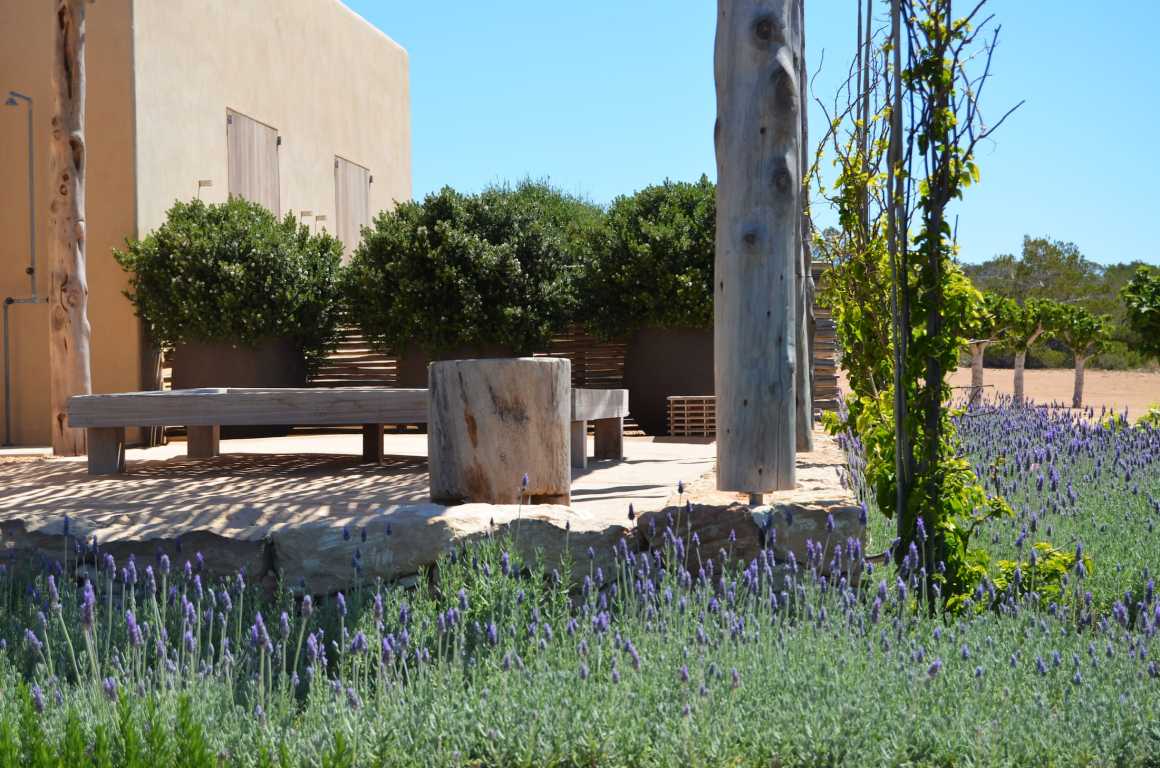
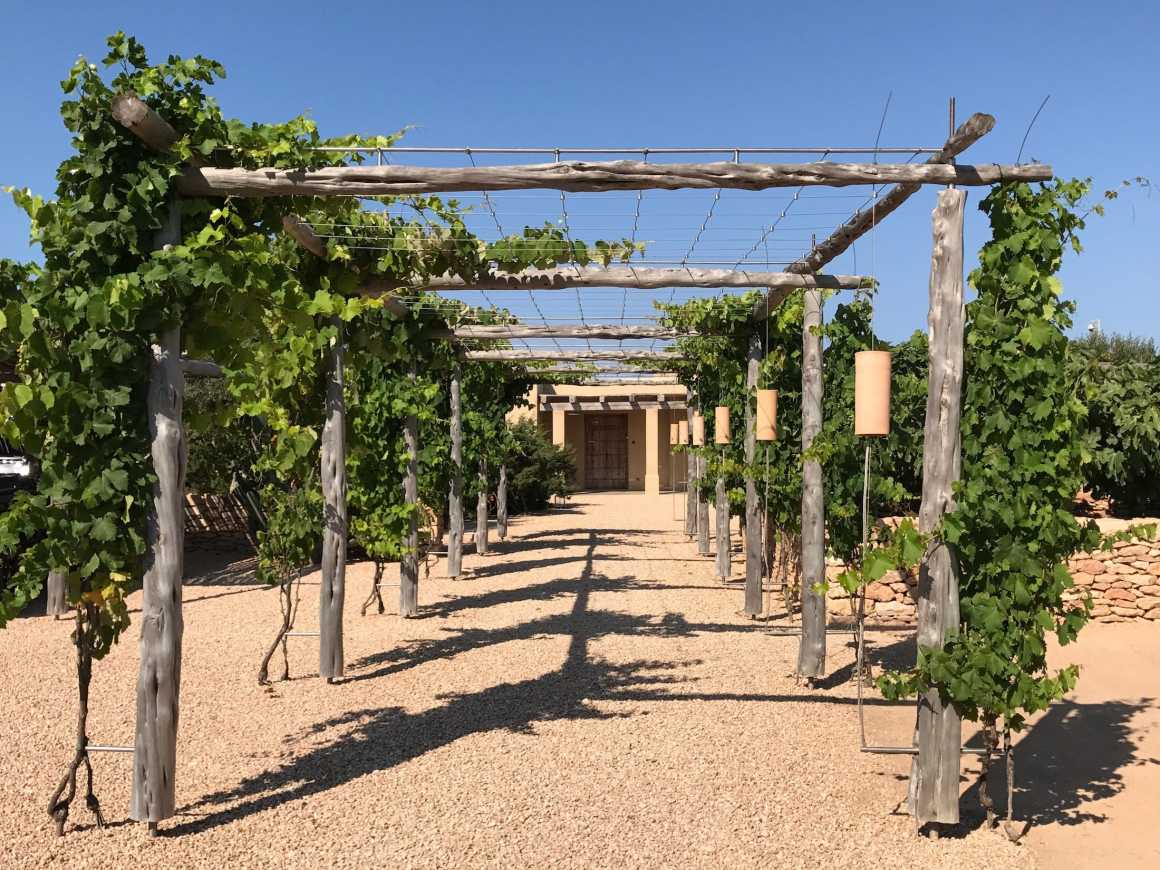
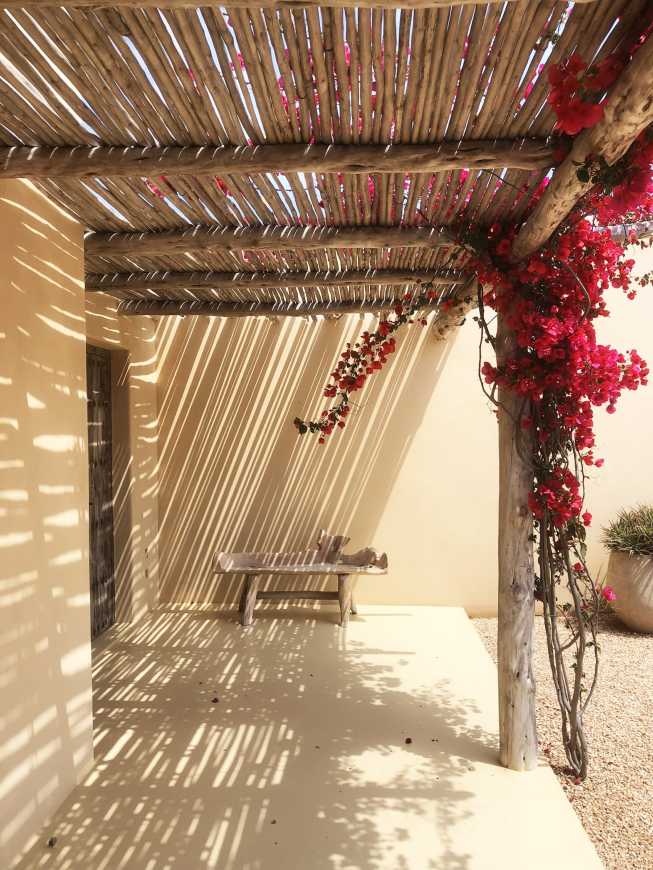
灌木种植园主要由当地的物种组成,其他灌木也必须能适应典型的地中海气候,因此需要选择同样环境条件区域生长的植物,例如博伊斯城堡的矢车菊属或不同品种的澳大利亚迷迭香,种植园的趣味性就多亏了这些交错开花的植物。园子里的多肉植物也发挥了非常重要的作用,因为它们适应了该地的干旱气候条件,所以作为一种孤立的标本,如一些龙舌兰和芦荟,形成了多种类型的占主导地位的植物群。
The shrub plantations are made mainly with the species native to the place, other shrubs typical of Mediterranean climates are also integrated and therefore require the same conditions as those of the area, for example artemisia (Artemisia “Powis Castle”), the centaurea (Centaurea pulcherrima) or different varieties of Australian rosemary (Westringia sp.) that it makes the plantation interesting thanks to the staggered flowering. Succulent plants also play a very important role given their adaptation to the arid conditions of the field and have been used both as isolated specimens, as is the case of some agaves and aloes, as forming groups in which different species of Echeveria predominate.
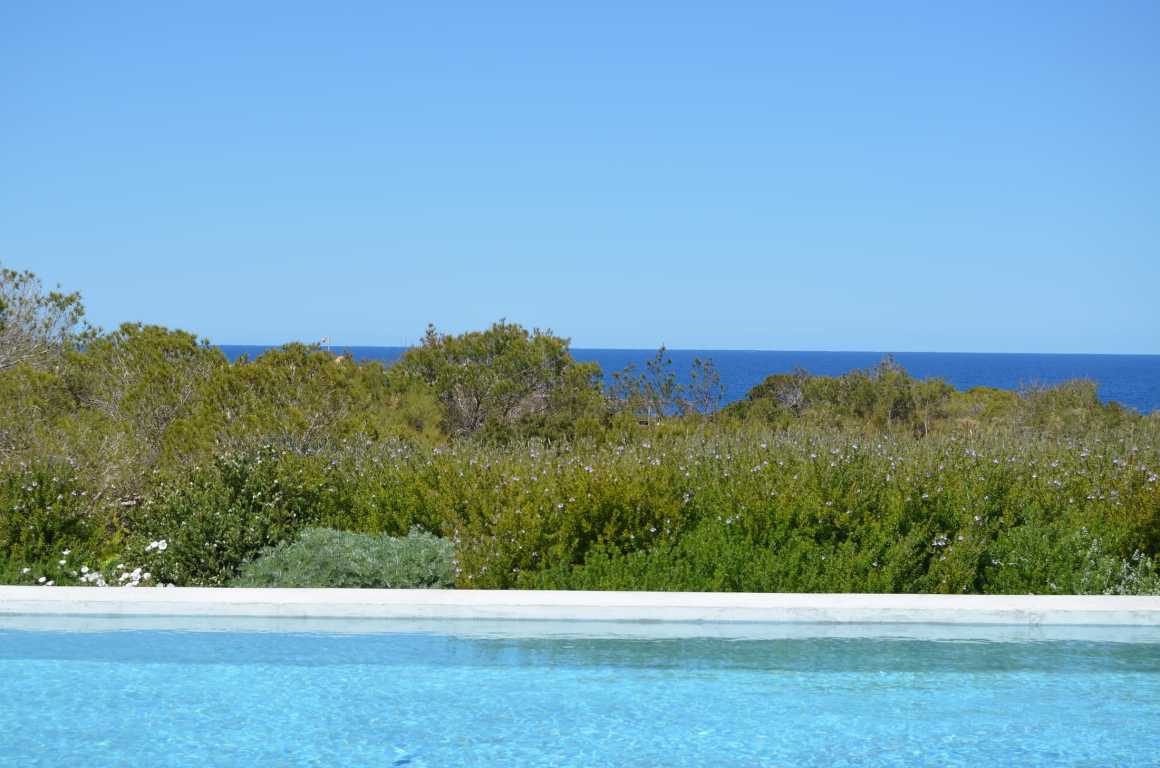
花盆中种植的植物物种与花园其他部分相同,比如一些多肉植物,尤其是大戟属植物、一些芦荟,如线条芦荟或沉香。关于灌木和常绿植物方面,灰叶植物经常被种植不同种类的成组种植园,如矢车菊、旋花、菊苣或其他大型孤立个体,比如澳大利亚迷迭香就是这种情况。至于攀援植物,一般种植在主要藤架旁边,如白色九重葛。
In the pots have been planted both the same shrub species that in the rest of the garden, as some examples of succulents, highlighting especially the euphorbias (Euphorbia ingens), some aloes such as Aloe striata or Echeverias (Echeveria ‘Ruffles’). Regarding the shrubs and evergreens, gray leaves have been used especially in grouped plantations of different species, such as Centaurea pulcherrima, Convolvulus cneorum, Helichrysum agrophyllum, or large isolated individuals, as is the case with the Australian pilgrims (Westringia fruticosa). As for the climbers, they also have their place next to the main pergola, in this case white bougainvillea.
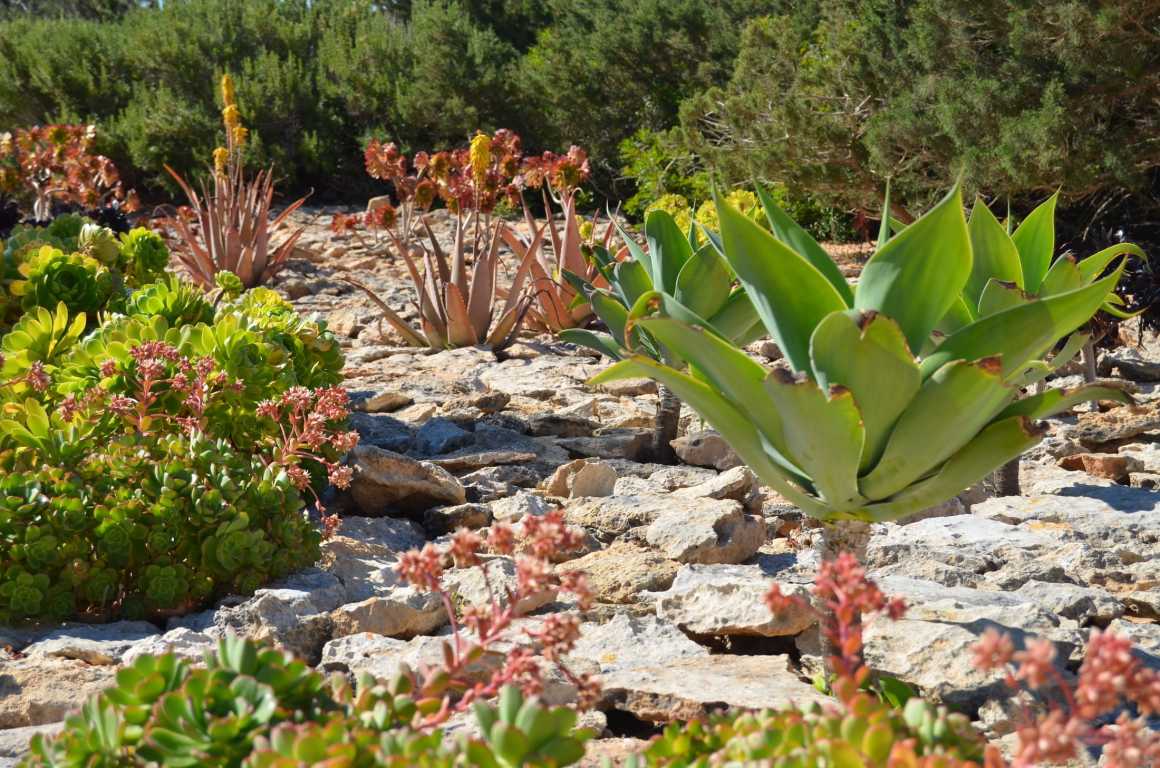
项目名称:福门特拉综合住宅景观
设计:2013年
建成:2016年
首席设计师和团队:Ana Esteve, Marcel Bilurbina, Sergi Abellan, Marilena Christodoulou
项目地点:西班牙 福门特拉岛
景观面积:170 370 m²
设计公司:AE Land
Project name: HOUSE COMPLEX IN FORMENTERA
Design year: 2013
Year Built: 2016
Leader designer and Team: Ana Esteve, Marcel Bilurbina, Sergi Abellan, Marilena Christodoulou
Project location (Street, City, Country): Formentera Island, Spain
Landscape Area: 170 370m²
Design Company: AE Land
更多 Read more about: AELAND


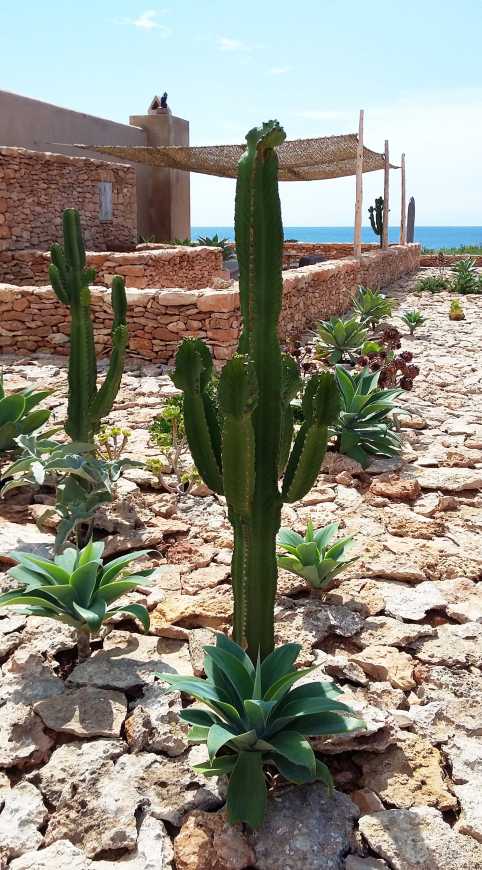
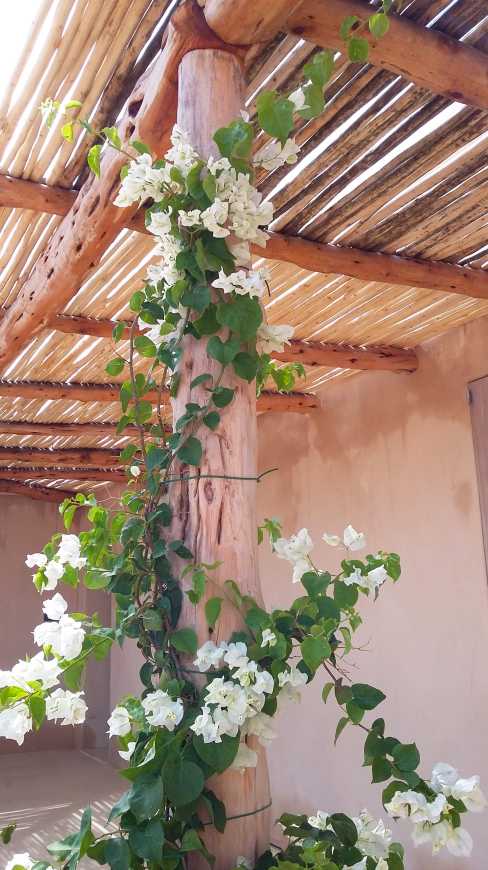


0 Comments